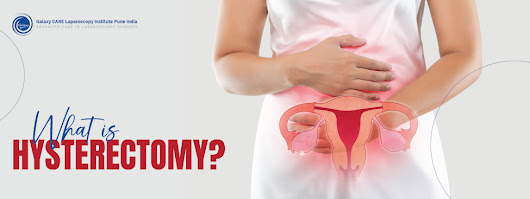WHAT IS HYSTERECTOMY?
Introduction: Hysterectomy is a surgical procedure that involves the removal of the uterus, a vital organ in the female reproductive system. This medical intervention is often recommended to address various health conditions and concerns. In this blog, we will delve into the details of what hysterectomy entails, the reasons for undergoing this procedure, and the potential impact on a woman's life.
1. Why Hysterectomy?
- Medical Conditions: Hysterectomy is often recommended when women face certain medical conditions that affect the uterus. These conditions may include uterine fibroids, endometriosis, uterine cancer, chronic pelvic pain, and abnormal bleeding that doesn't respond to other treatments.
- Life-Threatening Situations: In some cases, hysterectomy is performed as a life-saving measure, such as in cases of severe hemorrhage or when there is a risk of cancer spreading.
2. Types of Hysterectomy:
- Total Hysterectomy: Removal of the entire uterus, including the cervix.
- Subtotal or Partial Hysterectomy: Removal of the upper part of the uterus, leaving the cervix intact.
- Radical Hysterectomy: Removal of the uterus, cervix, part of the vagina, and surrounding tissues. This is typically done in cases of gynecologic cancer.
3. Surgical Approaches:
- Abdominal Hysterectomy: The uterus is removed through an incision in the abdominal wall.
- Vaginal Hysterectomy: The uterus is removed through the vagina.
- Laparoscopic Hysterectomy: Minimally invasive surgery using small incisions and a camera for guidance.
4. Considerations Before Hysterectomy:
- Impact on Fertility: Hysterectomy results in the loss of fertility. It's crucial for women to discuss this aspect with their healthcare provider, especially if they have not completed their family planning.
- Emotional and Psychological Aspects: The procedure can have emotional implications. Open communication with healthcare providers and support networks is essential.
5. Recovery and Aftercare:
- Hospital Stay: Recovery time varies, but most women can expect to stay in the hospital for a few days.
- Physical Activity: Rest and gradually increasing physical activity are crucial during the recovery period.
- Hormonal Changes: Removal of the uterus may lead to hormonal changes, and hormone replacement therapy (HRT) may be recommended in certain cases.
6. Potential Risks and Complications:
- Infection: As with any surgery, there is a risk of infection.
- Bleeding: Excessive bleeding may occur during or after the procedure.
- Urinary Incontinence: Some women may experience issues with bladder control.
7. Life After Hysterectomy:
- Menopause: Hysterectomy may induce menopause if the ovaries are also removed. Symptoms and management options should be discussed with healthcare providers.
- Improved Quality of Life: For many women, hysterectomy provides relief from symptoms and improves their overall quality of life.
Conclusion: Hysterectomy is a significant medical intervention that can have a profound impact on a woman's health and well-being. It is essential for individuals considering this procedure to have open and honest discussions with their healthcare providers, understanding the reasons behind it, potential risks, and the expected outcomes. Every woman's situation is unique, and the decision to undergo a hysterectomy should be personalized, taking into account both medical and emotional factors.




Comments
Post a Comment